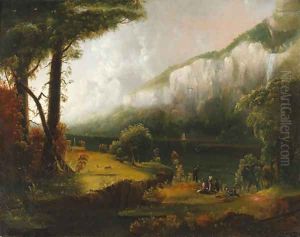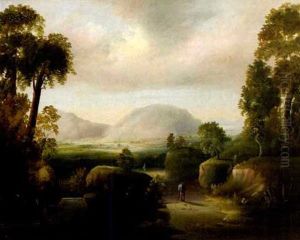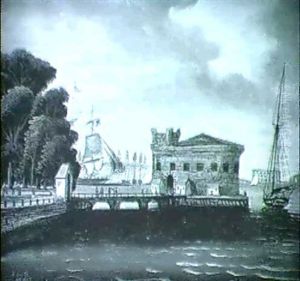John Rubens Smith Paintings
John Rubens Smith was a British-American artist, engraver, and art instructor whose career spanned the late 18th and early 19th centuries. Born in London in 1775, Smith was the son of the famous British engraver John Raphael Smith, who was well known for his mezzotint engravings. Growing up in an artistic environment, John Rubens Smith was exposed to the world of art from an early age and received training from his father, which influenced his later work as an artist and engraver.
Smith emigrated to the United States around 1807, settling initially in New York City. His arrival in America coincided with the burgeoning interest in fine arts in the young republic, and he found a receptive audience for his work. He traveled extensively throughout the United States, capturing the landscapes, cities, and burgeoning urban life of the young nation in his drawings and engravings. His work provides valuable historical insights into the early years of the United States, as it documents the architecture and urban planning of the era.
In addition to his work as an artist, Smith also contributed to the American art scene as an educator. He established art schools in a number of cities, including New York, Philadelphia, and Boston, where he taught drawing and engraving. Through his teaching, he aimed to foster a robust American art tradition and to train a new generation of artists and engravers.
John Rubens Smith was quite prolific and versatile, creating a variety of works that included book illustrations, portraits, landscapes, and historical scenes. Despite the significance of his contributions to early American art, his legacy is not as well known as that of some of his contemporaries. He passed away in 1849, leaving behind a body of work that serves as a valuable resource for understanding the visual culture of early America.








